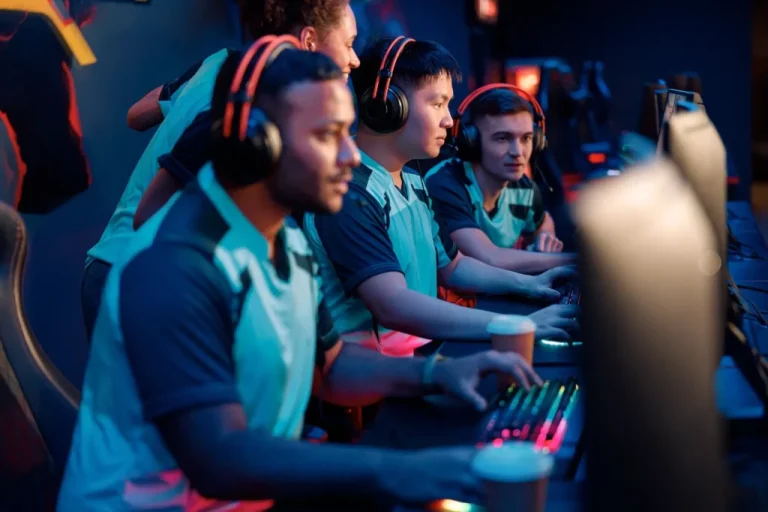Sports have always been more than just games. They carry with them stories of triumph, resilience, and unity that go far beyond the playing field. Whether in a crowded stadium, a neighborhood park, or through a screen at home, the energy of sports has a way of bringing people together. Over the years, however, the way people interact with and experience sports has dramatically changed, thanks to technology and globalization.
Contents ⤵️
A Historical Glimpse into Sports Culture
The roots of sports stretch back thousands of years. Ancient societies saw athletics not only as entertainment but as a reflection of cultural and spiritual values. The Olympic Games of Greece, for example, were deeply tied to religion and community pride. Likewise, sports in other civilizations from wrestling in Egypt to ball games in Central America served as more than competitions. They were symbolic of identity, ritual, and even survival.
As centuries passed, sports became increasingly organized. Rules were standardized, teams were formed, and leagues emerged. What was once a local activity began transforming into a more globalized phenomenon.
The Media Revolution in Sports
The 20th century introduced a powerful force that forever altered the reach of sports: media. Radio broadcasts, television coverage, and eventually satellite broadcasting gave audiences unprecedented access to live events. Fans no longer needed to be in the stadium; they could feel the excitement from their living rooms.
This shift not only expanded the fan base but also created new cultural icons. Athletes turned into celebrities, and tournaments into global events. The Super Bowl, FIFA World Cup, and Olympic Games became must-watch spectacles, shaping traditions and creating shared moments across generations.
Technology and the Modern Fan Experience
The digital era has taken this transformation even further. Today, sports are not only about what happens on the field but also about the layers of interaction surrounding them.
- Streaming services allow fans to watch matches on any device, anywhere in the world.
- Social media creates real-time conversations, making fans part of the action.
- Data and analytics give deeper insights into performance, strategy, and even fan behavior.
For athletes, technology provides tools for training and injury prevention. For fans, it provides endless opportunities to connect, engage, and explore sports beyond the final score.
The Social and Cultural Role of Sports
Sports have always reflected society’s values, struggles, and progress. They are not only about competition but also about inclusion, fairness, and change. The breaking of racial and gender barriers, the rise of women’s leagues, and the increasing emphasis on mental health in athletics highlight how sports can be a stage for broader conversations.
Beyond social impact, sports are tied to identity. Cheering for a team often connects people to family traditions, hometown pride, or even national spirit. Rituals like chants, jerseys, and celebrations become shared cultural expressions.
Digital Engagement and New Trends
The rise of the internet has introduced new ways for fans to immerse themselves in sports culture. Fantasy leagues, esports, live chats, and online communities have all become integral parts of the fan experience. These spaces allow fans not only to consume content but also to actively participate in the conversation.
In some regions, conversations around topics like แทงบอลออนไลน์ have also become part of the digital fan culture. While the concept itself isn’t new, its online adaptation highlights how traditional aspects of sports have evolved alongside modern technology. It’s another reminder of how deeply sports are woven into both cultural traditions and digital innovations.
Looking Toward the Future of Sports
The future promises even more exciting developments. Virtual reality and augmented reality may soon allow fans to experience matches as if they were sitting in the stadium, no matter where they are in the world. Advances in wearable technology will continue to shape athletic performance and fan interaction.
Sustainability will also play a role, as organizations look for ways to reduce the environmental impact of mega-events. Meanwhile, inclusivity and accessibility remain essential to ensuring that sports continue to bring people together, regardless of age, background, or location.
Conclusion
Sports have always been evolving, adapting to cultural shifts and technological innovations. From ancient rituals to global tournaments and digital communities, the journey of sports reflects the journey of humanity itself always changing, always connecting.
Today’s fan experience is interactive, global, and deeply personal, shaped by technology and the ever-expanding digital world. Yet, no matter how much the landscape evolves, the spirit of sports remains unchanged: a celebration of skill, unity, and the shared joy of competition.

